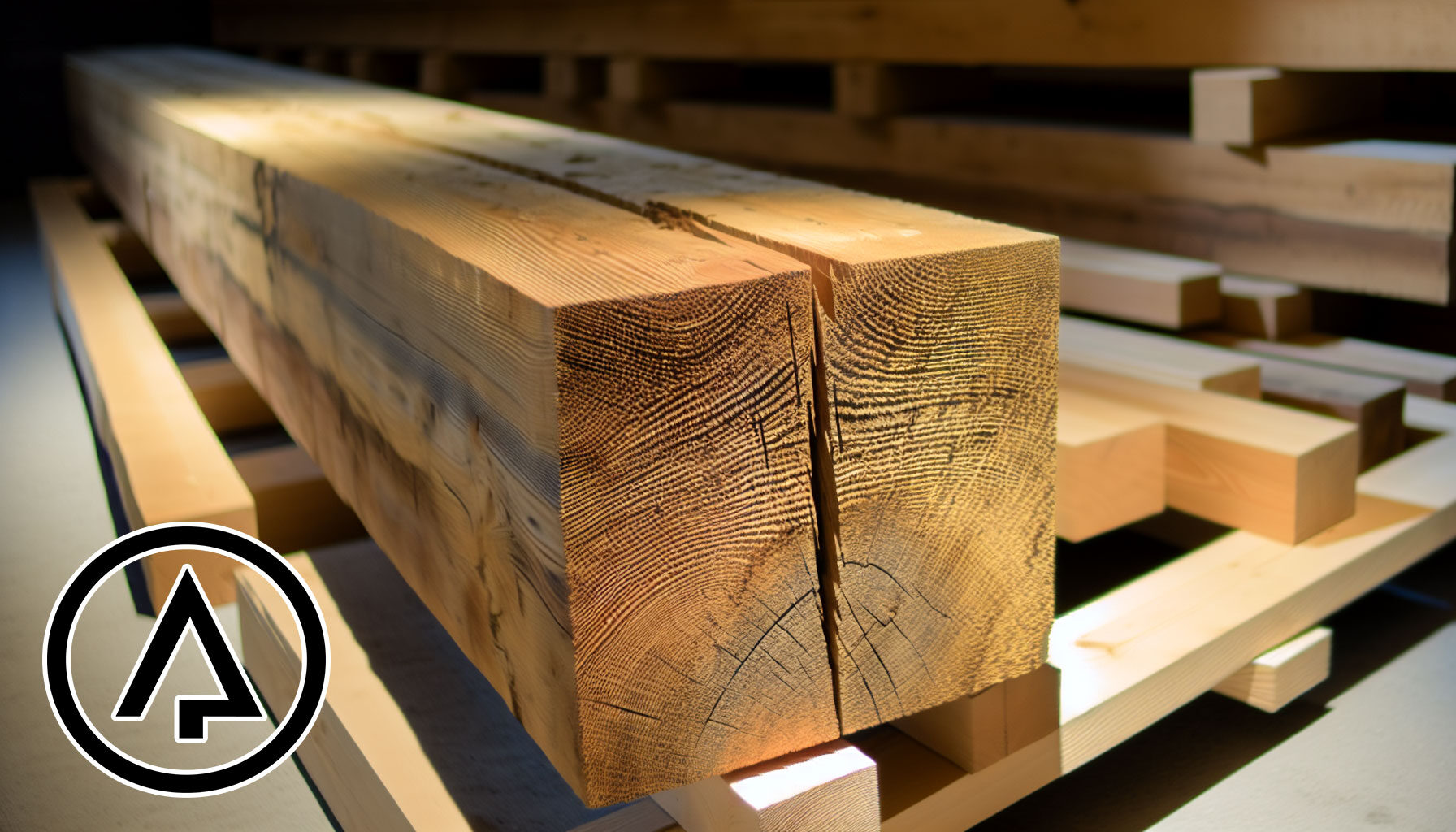In the realm of commercial construction, wood timbers are prized for their natural beauty, versatility, and structural strength. However, one common challenge builders face is the cracking and splitting of these timbers. Understanding why these issues occur is crucial to maintaining your projects' aesthetic and structural integrity. This post will delve into the reasons behind wood cracking and splitting, the types of wood most susceptible to these issues, and best practices to prevent them.
Understanding Wood Behavior
Wood is a living material that behaves uniquely compared to synthetic building materials. This section covers how wood’s organic properties contribute to cracking and splitting.
Wood as a Natural Material
Wood is inherently hygroscopic, absorbing and releasing moisture from the environment. This characteristic causes wood to expand and contract as it gains or loses moisture, leading to internal stresses that can result in cracking, also known as "checking."
Moisture Content and Its Role
The moisture content in wood refers to the amount of water in the wood’s cells. Freshly cut, or "green" wood, contains high moisture levels. As it dries, it shrinks. This shrinkage is not uniform and causes internal stresses. Wood shrinks roughly twice as much along the growth rings (radially) as it does across the rings (tangentially), leading to the development of checks.
Causes of Cracking and Splitting
Several factors contribute to why wood timbers crack and split:
Shrinkage and Expansion
Wood’s natural response to moisture changes involves shrinking when it loses moisture and expanding when it gains moisture. This process is not uniform; wood shrinks more tangentially than radially, creating stress that manifests as cracks.
Environmental Factors
-
- Temperature Fluctuations: Rapid temperature changes can cause wood to expand and contract quickly, increasing the risk of cracking.
- Humidity Changes: Variations in humidity levels can lead to uneven moisture distribution within the wood, causing internal stress and eventual splitting. For example, wood dries approximately 1 inch per year, so a 12x12 timber could take around 6 years to dry to the center.
- Exposure to Sunlight and Weather: Prolonged exposure to direct sunlight and weather elements like rain and snow accelerates moisture loss, increasing the likelihood of surface cracks.
Intrinsic Properties of Wood
-
- Grain Patterns and Density: The natural variations in wood’s grain pattern and density can make some species more prone to cracking. Straight-grained wood generally performs better in resisting checks.
- Types of Wood Prone to Cracking: Some species are more stable. For example, Douglas Fir and Western Red Cedar tend to shrink less compared to species like White Oak, which can shrink more significantly.
- Mechanical Stress: Physical forces exerted on wood during construction or use, such as weight, pressure, or tension, can contribute to cracking. Overloading or improper installation techniques often cause these stresses.

Best Practices to Prevent Cracking and Splitting
Preventing wood timbers from cracking and splitting involves careful selection, handling, and maintenance:
Proper Selection and Grading: Choose wood species and grades that are less prone to cracking. High-quality, well-dried timbers reduce the likelihood of future issues. For example, specifying "Free-Of-Heart-Center" instead of the less expensive "Boxed Heart" grade can minimize the risk of checks.
Seasoning and Drying Techniques
Kiln Drying
This controlled drying process reduces moisture content evenly and quickly, minimizing the risk of cracking.
Air Drying
Though slower, air drying can be effective if done correctly. It’s important to control the drying rate to prevent rapid moisture loss that leads to cracks.
-
Design Considerations
- Accommodate Wood Movement: Design elements should consider potential wood movement due to moisture changes. This can include allowing for expansion and contraction and avoiding designs that create fixed stresses.
- Use of Expansion Joints: These joints can absorb the stress caused by wood expansion and contraction, reducing the risk of cracks.
Installation and Maintenance Tips
- Proper Handling: Handle wood carefully during installation to avoid introducing stress that can cause cracks.
- Regular Maintenance: Routine inspections and maintenance can help identify and address minor cracks before they become major issues. Applying wax-based end sealers can slow the drying process, reducing the risk of cracks.
- Sealants and Finishes: Applying appropriate sealants and finishes can protect the wood from moisture changes and environmental damage. However, avoid applying film-forming finishes like polyurethane to green wood, as this can trap moisture and increase the risk of checks.
Specialty Treatments and Solutions
For added protection and longevity, consider these specialty treatments and solutions:
- Stabilization Methods: Chemical treatments, such as wood stabilizers, can reduce the wood’s tendency to crack by minimizing moisture fluctuations. Products like Anchorseal can be applied to the ends of timbers to slow down the drying process and prevent rapid moisture loss.
- Reinforcement Techniques: Using metal or composite reinforcements in high-stress areas can provide additional support and reduce the risk of cracking.
- Innovative Products: Engineered wood products, like laminated beams or composite wood, are designed to resist cracking and offer enhanced stability. Reclaimed wood, which has naturally dried over many years, is often more stable and less prone to cracking. Reclaimed beams can be an excellent choice for projects that want to incorporate historical materials with minimized risks of checks.
Conclusion
Understanding why wood timbers crack and split is essential for maintaining the beauty and integrity of your commercial projects. You can significantly reduce the likelihood of cracks and splits by selecting the right wood types, employing proper drying and handling techniques, and incorporating design strategies that accommodate wood movement.
At Reliance Specialty Building Products, we offer a range of high-quality lumber and wood products designed to meet the demands of your premium projects. Visit our Lumber Storage Tips page for more information on the best storage practices to prevent cracks and splits in your wood timbers. If you need personalized assistance or have specific questions, please contact us.
By leveraging our expertise and following best practices, you can ensure your construction projects stand out for their quality, durability, and aesthetic appeal.


